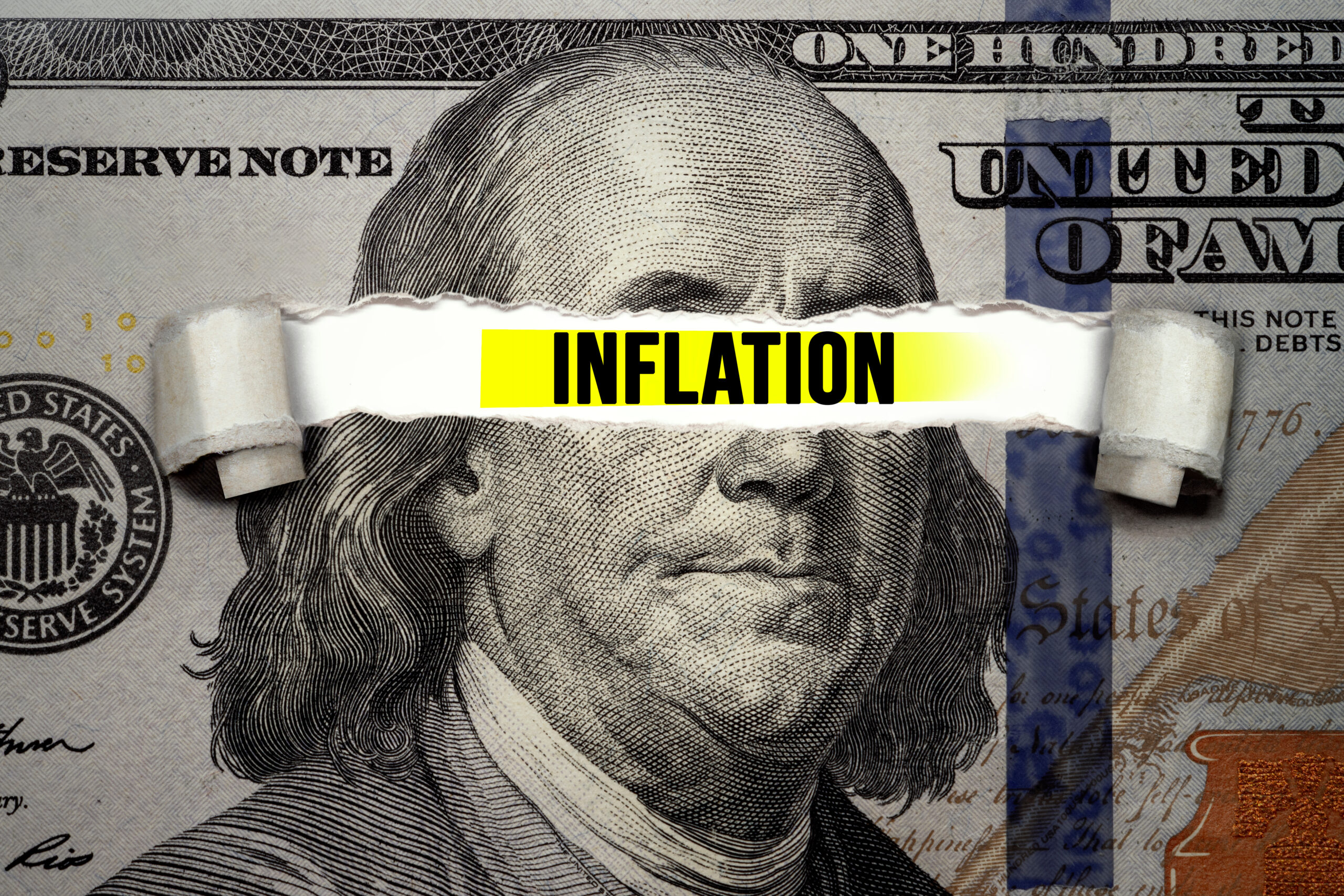February 4th, 2022
For the past few months, high inflation numbers and Fed policy fears have wrecked Bitcoin. The US consumer price index for January is forecast to print 7.3%, according to a recent Reutors poll. Futures traders have factored in at least five rate hikes this year, and the 10-year U.S. Treasury yield has climbed to over 1.9%.
Fear of the Fed & Inflation

Charted above: US Dollar Inflation (red, plotted on the Y-axis on the left) vs US 10Y Treasury yield YoY percentage increase (blue) vs Bitcoin YoY percentage increase (orange).
Since CPI inflation printed over 6% in November, investor sentiment has been undeniably bearish across nearly all markets. When inflation further increased to cross over 7% in December, this caused Bitcoin to enter oversold levels not seen since the 2020 Covid crash (see the article covering this here).

With the recent rally to $44k, there is evidence is to show that – at least in the short-term – Bitcoin is no longer scared of the Fed. Since Bitcoin is new kind of monetary asset that runs on its own rules, it is possible that in the long-term it can perform well amidst high inflation and Fed policy tightening.
The January CPI report is expected to print 7.3% tomorrow (2/10/22). This could boost the case for a more aggressive Fed and extend the climb in bond yields. Furthermore, if a January high inflation print is combined with even more inflation in February, then this increases the likelihood of a 50 basis point Federal funds rate hike in March.
Joseph Wang, a self-described former senior fed trader, believes the current state of markets and Fed policy could lead to another meltdown – similar to that which occured in Q4 of 2018. With the current state of the Bitcoin market, there are two alternatives to consider:
- Fear of the Fed is already priced in. This would mean that Bitcoin bottomed at $33k on Jan 24th.
- Current Bitcoin investors are too confident in the resumption of a bullish rally, and underestimate the effects of Fed tightening. This would lead to downside move back to below $40k / BTC.

The good thing about Bitcoin, is that every time it has been hit, it has always shown extreme resiliance. In the short-term, Bitcoin has about a month to prepare for the FOMC meeting in March.
Bitcoin’s current market structure and on-chain metrics look healthy, and it seems that an over 7% CPI inflation print is already priced in. As we observed during Bitcoin’s January crash, there is strong demand for Bitcoin in the low $30k range. Now, the new most important price floor for Bitcoin to hold is $40k.

Charted above: Green line = 50D, Yellow line = 100D, Blue line = 200D moving averages
In regard to technical analysis, Bitcoin’s price chart has formed a symmetrical structure over the past year. During Bitcoin’s 2021 crash, the 50D passed over the 100 and 200 day moving averages to eventually bottom at a 40% decrease from its peak. Now, the 50D has again completed a cross over the 100 and 200 day moving averages, and it seems to be bottoming at a 30% decrease from its local peak.





